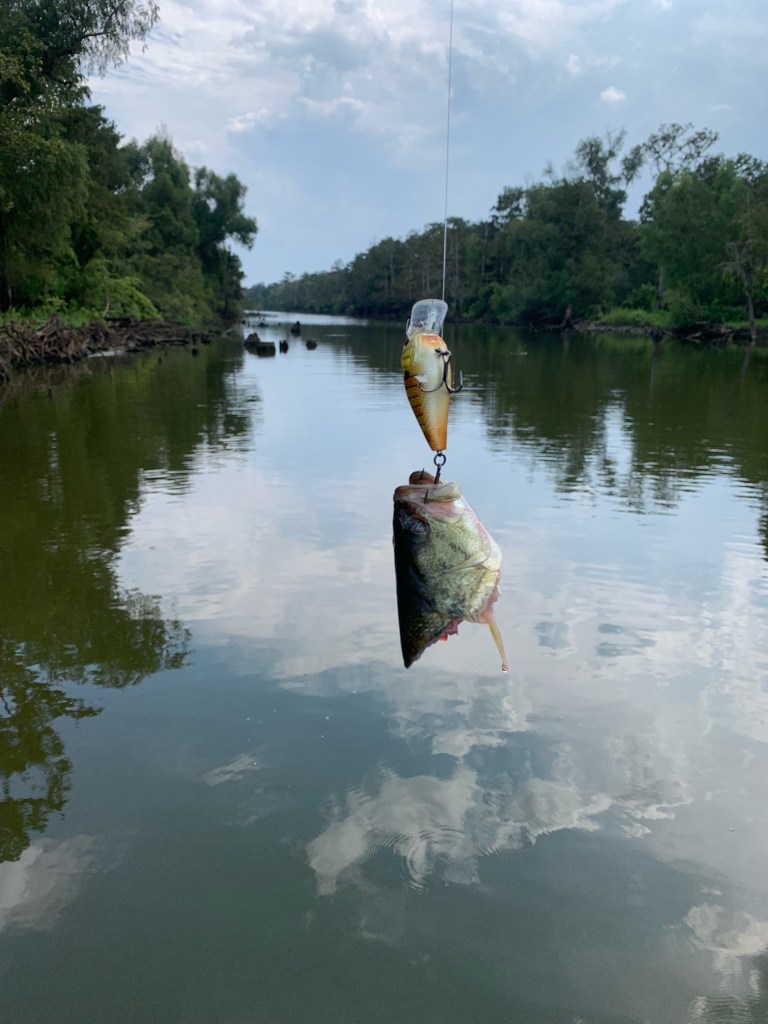As of now, Basin spared from idea to stop Miss. River flow at Simmesport
Published 5:00 am Wednesday, October 11, 2023

- A bass angler who hooked a bass in Bayou Benoit the first week of October reeled it to the boat only to have what is believed to be a shark chomp more than half the fish on a partly cloudy day in the Atchafalaya Basin. More and more reports of shark, gafftopsail catfish, redfish and stingray catches are coming from the Spillway and Lake Fausse Pointe.
The latest threat to the nation’s last great overflow swamp subsided, at least for now, but reports last week leave its overall health in question.
It’s a salty situation in more ways than one, for sure.
As saltwater creeps slowly up the very low Mississippi River toward New Orleans, prompting drinking water advisories along the way since June, officials reaching for solutions came up with an idea to completely stop the 70-30 diversion flow (per law) into the Atchafalaya River at Simmesport. Such drastic action would drop the river that feeds the Atchafalaya Basin to levels never seen before and leave it vulnerable to saltwater coming up from the western Gulf of Mexico.
Louisiana Crawfish Producers Association-West officers and members discussed the tentative plan at their meeting Oct. 3. They raised the alarm loud and clear.
James Fredieu of St. Martinville, an LCPA-West officer, all-around outdoorsman and avid bass angler, reported such a move was being considered by the U.S. Army Corps of Engineers and the Gov. Jon Bel Edwards administration to divert the Big Muddy’s full flow east toward Baton Rouge and New Orleans.
“This could put the Basin -2 or -4-feet at the Butte La Rose gauge,” Fredieu wrote in a text Oct. 4. As of 5 p.m. Oct. 8, the Atchafalaya River stage at Butte La Rose was 2.81 feet, very low already.
State Rep. Blake Miguez, a Republican from New Iberia who is vying for the Senate District 22 seat being vacated by State Sen. Fred Mills, R-Parks, and other elected officials from Lafayette to Morgan City were contacted about the possibility.
Miguez said during a two-minute phone call with an outdoors writer last week he was aware of the dire implications to our nation’s last great overflow. He also was in contact last week with state officials and representatives of the Corps.
Later that night, Miguez texted: “As of now they are not closing it.”
That was a relief. It’s also timely because updated projections show the saltwater wedge in the lower Mississippi River – projected to be in Belle Chasse by Oct. 13 — probably won’t reach New Orleans until late November, if at all.
On the surface it appears the Atchafalaya Basin has been spared a calamitous blow to a fragile ecosystem going into mid-October. But Mother Nature already may be showing her hand as far as saltwater intrusion.
Fredieu shared several eye-opening reports late last week. He said saltwater species being caught by anglers as far north on this side of the Atchafalaya Basin as Bayou Benoit, where apparently a shark bit a bass in half recently as it was being reeled in after biting a crank bait, and Bayou Crook Chene, where a woman caught six stingrays and three sharks Oct. 3 off the dock she usually catches blue catfish.
“I’m getting scared for our fisheries. We’re fighting for everybody,” Fredieu said that evening about LCPA-West.
Even in Lake Fausse Pointe. He believes saltwater, no matter the ppt (parts per thousand), may be responsible for the shocking disappearance of grass this year and last year in Sandy Cove.
There’s more evidence of something amiss in Lake Fausse Pointe.
Two weeks ago, according to Fredieu, gafftopsail catfish and large redfish reportedly were caught along sandbars in Big Lake (Jeanerette Lake) outside Cotton Canal near the West Atchafalaya Basin Protection Levee. Another local angler fishing around the same time with 40 juglines caught 20 gafftops in Bird Island Chute.
That sharks are prowling in our freshwater system should be a major concern for inland fisheries biologists with Louisiana Department of Wildlife and Fisheries, Fredieu said, noting he has yet to see any response from them, he said.
DON SHOOPMAN is outdoors editor of The Daily Iberian.





